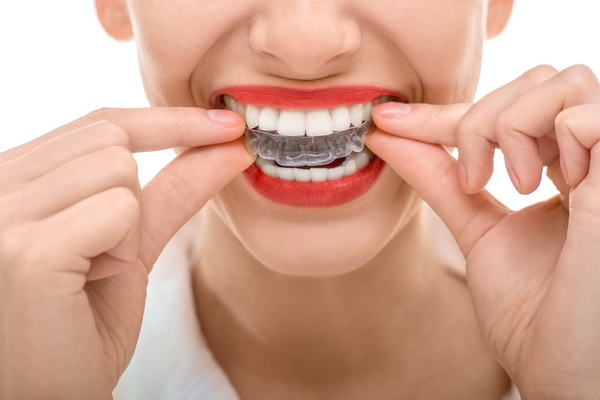Notifications
ALL BUSINESS
COMIDA
DIRECTORIES
ENTERTAINMENT
FINER THINGS
HEALTH
MARKETPLACE
MEMBER's ONLY
MONEY MATTER$
MOTIVATIONAL
NEWS & WEATHER
TECHNOLOGIA
TV NETWORKS
VIDEOS
VOTE USA 2026/2028
INVESTOR RELATIONS
DEV FOR 2025 / 2026
ALL BUSINESS
COMIDA
DIRECTORIES
ENTERTAINMENT
FINER THINGS
HEALTH
MARKETPLACE
MEMBER's ONLY
MONEY MATTER$
MOTIVATIONAL
NEWS & WEATHER
TECHNOLOGIA
TV NETWORKS
VIDEOS
VOTE USA 2026/2028
INVESTOR RELATIONS
DEV FOR 2025 / 2026
About Me
 Fab Dental
Fab Dental Fab Dental is a premier dental care provider dedicated to enhancing smiles and oral health. With a team of skilled professionals and state-of-the-art facilities, we offer a comprehensive range of services, from routine check-ups and cleanings to advanced cosmetic and restorative treatments. Our patient-centered approach ensures personalized care, fostering a comfortable and friendly environment. At Fab Dental, we prioritize preventive measures and innovative techniques to ensure optimal dental wellness. Your journey to a healthier, more radiant smile begins with us. Trust Fab Dental for excellence in dentistry and a reason to smile.
 Fab Dental -
June 17, 2024 -
Health -
best orthodontist for invisalign
-
463 views -
0 Comments -
0 Likes -
0 Reviews
Fab Dental -
June 17, 2024 -
Health -
best orthodontist for invisalign
-
463 views -
0 Comments -
0 Likes -
0 Reviews

Invisalign has revolutionized orthodontics, offering a clear and convenient alternative to traditional metal braces. This modern approach to straightening teeth utilizes a series of custom-made, removable aligners that gradually shift teeth into their desired positions. However, achieving the best results with Invisalign often requires various adjustments throughout treatment. Understanding these adjustments can help patients set realistic expectations and better appreciate the expertise required from their orthodontist.
Initial Assessment and Treatment Planning
The journey with Invisalign begins with a comprehensive assessment by an orthodontist. This initial phase is crucial as it sets the stage for the entire treatment. The orthodontist will take digital scans, photographs, and X-rays of the patient’s teeth. These images are then used to create a detailed 3D model of the patient’s mouth, which allows the orthodontist to design a precise treatment plan.
Refinement of Aligners
One of the most common adjustments during Invisalign treatment is the refinement of the aligners. As patients progress through their aligner trays, they may find that certain teeth are not moving as predicted. This discrepancy can be due to various factors, such as the natural resistance of the teeth or inconsistencies in wear time.
In such cases, the orthodontist may take new impressions or digital scans to create additional aligners, often called "refinement aligners." These aligners address areas where teeth have not moved as expected, ensuring the treatment stays on track.
Attachments and Buttons
Attachments, or buttons, are small, tooth-colored bumps temporarily bonded to the teeth. These attachments provide additional grip for the aligners, allowing them to apply more precise forces to specific teeth. The best orthodontist for Invisalign will skillfully place these attachments to maximize their effectiveness without compromising the aesthetic appeal of the treatment.
The number and location of attachments can vary throughout the treatment. Orthodontists may add, remove, or reposition these attachments to facilitate complex tooth movements. This flexibility allows for a more customized and effective treatment plan.
Interproximal Reduction (IPR)
Interproximal Reduction (IPR) is another adjustment that might be necessary during Invisalign treatment. IPR involves the selective removal of small amounts of enamel between teeth. This procedure creates additional space for teeth to move and can help alleviate crowding or improve alignment.
The best orthodontist for Invisalign will perform IPR precisely to ensure it is done safely and effectively. IPR is typically planned at the beginning of the treatment and may be carried out at various stages as the teeth shift.
Monitoring and Adjusting Wear Time
To be effective, Invisalign aligners need to be worn for 20 to 22 hours per day. However, patient compliance can vary, and this directly impacts treatment progress. Orthodontists will regularly monitor the patient’s progress and may adjust the prescribed wear time based on the observed results.
For instance, if teeth are not moving as anticipated, the orthodontist might extend the duration for which a particular set of aligners should be worn. Conversely, if the teeth move faster than expected, the orthodontist might expedite the switch to the next set of aligners.
Addressing Discomfort and Fit Issues
While Invisalign is generally more comfortable than traditional braces, some patients may experience discomfort or fit issues with their aligners. These issues can range from minor irritations to significant pain that hinders compliance.
Orthodontists can make various adjustments to address these problems. They might trim the edges of the aligners to reduce irritation, adjust the pressure points, or provide wax to cover any sharp areas. Ensuring a comfortable fit is essential for maintaining patient compliance and achieving the best outcomes.
Mid-Course Corrections
Despite careful planning and diligent adherence to wearing aligners, mid-course corrections are sometimes necessary. These adjustments occur when the teeth are not aligning as expected at a certain stage of the treatment.
The orthodontist might perform new scans and modify the treatment plan to accommodate these unexpected changes. Mid-course corrections ensure the treatment remains effective and efficient, preventing delays and optimizing results.
Use of Elastics
Elastics, or rubber bands, are sometimes used with Invisalign to correct bite issues such as overbites, underbites, or crossbites. These small, stretchy bands are attached to hooks on the aligners and exert additional force to guide the teeth and jaw into the correct positions.
The best orthodontist for Invisalign will determine if elastics are necessary based on the patient’s needs. They will provide detailed instructions on how to wear the elastics and monitor their effectiveness throughout the treatment.
Retention Phase Adjustments
Patients enter the retention phase once the active phase of Invisalign treatment is complete. During this phase, retainers are used to maintain the teeth's new positions. The type of retainer and the duration it must be worn can vary.
Orthodontists may need to adjust retainers periodically to ensure they fit correctly and effectively hold the teeth in place. Regular follow-up appointments are essential during this phase to prevent relapse and ensure long-term success.
Conclusion
Invisalign offers a highly customizable and discreet method for achieving a beautiful, straight smile. However, the path to perfect alignment often involves various adjustments and refinements. From the initial assessment to the retention phase, each step requires the expertise and vigilance of a skilled orthodontist. By understanding these common adjustments, patients can better appreciate the complexity of their treatment and the pivotal role played by their orthodontist in achieving optimal results. When seeking treatment, choosing the best orthodontist for Invisalign can make a significant difference in the overall experience and outcome, ensuring a smoother journey toward a perfect smile.
